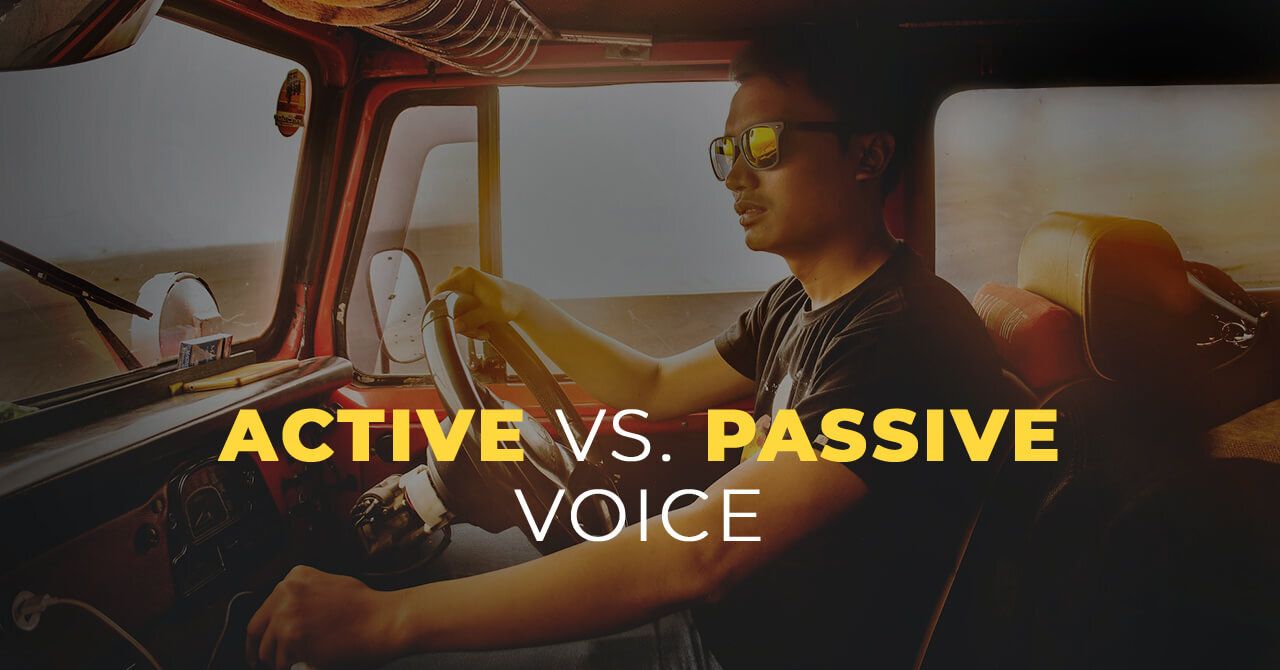
Active and Passive Voice: Differences, Usages, and Examples
Although the passive voice is used much less than the active one in both speaking and writing, certain situations require using it.
The grammatical voice, active and passive voice, can be confusing to many English language learners. However, we need it to show how the action expressed by the verb is related to the participant, subject, or object affected by the verb.
This is why we use one of the two voices when writing sentences with transitive verbs.
However, most English language learners have been taught that the passive voice is just unnecessary and they should therefore avoid it.
Although the passive voice is used much less than the active one in both speaking and writing, certain situations require using it.
Making a Difference Between Active and Passive Voice
Learning their function and how to form them is the key to making a difference between active and passive voices. Only by understanding why and when to use them will you be able to write and talk like an English native speaker.
What is active voice? Function and usage
Active voice is one of the two grammatical voices that makes your sentences simpler and your meaning clearer. People use it when they want others to focus on the doer of the action or the subject in the sentence and the action itself.
Mia left the party.
Tom doesn’t eat chocolate.
In the active voice examples above, it’s clear that the subjects Mia and Tom are performing the actions “leave” and “eat.” Here, we want to focus on the subject and the action or event in the sentence rather than on the objects “party” and “chocolate.”
How to form an active voice
Forming the active voice is simpler than the passive voice because you follow the basic sentence pattern—Subject + Verb + Object.
Since the subject in the sentence is the doer of the action, it goes at the beginning of the sentence. This shows how important it is to know who does the action so you can understand the sentence’s meaning.
Tiffany has cleaned her room.
In this example, Tiffany is the subject that performs the action “clean,” and the verb can be in any tense or aspect.
What is passive voice? Function and Usage
Passive voice is the more rarely used grammatical voice in English. Generally, it makes the sentences longer and more formal, but this doesn’t mean you should always avoid it. In fact, using this voice is more appropriate in certain situations than using the active one.
You should use it when you want to point out the action itself or the results of the action instead of the doer of the action. This is especially useful when you don’t know who has performed the action or when you’re unsure about it.
Or when you simply want to omit it because it’s irrelevant or you want to hide it for any reason. This is why the passive voice is commonly used in news reports, mystery, and academic and scientific writing.
An ancient pendant was found in the attic by Mary.
They will be remembered.
Two cars were stolen from the parking lot.
In the second and third examples above, the doers of the actions “remember” and “steal” are not mentioned because they are either irrelevant or unknown.
In the first example, the doer of the action is mentioned at the end of the sentence, but it’s still not as important as the action itself, so it may even omit it. The focus of all three examples is on the person or thing that undergoes or receives the action.
You can also use this voice to create an authoritative tone, as shown in the example below:
Minors are not allowed after 10 AM.
How to form a passive voice
Even though sentences in passive voice have the same structure as other English sentences—Subject + Verb + Object, there’s a big difference you need to be aware of.
Here, the subject of the sentence is the one who receives the action or the object of the same sentence written in active voice.
I watched the video. – active voice
The video was watched by me. – passive voice
Another thing to remember is that the verb in passive voice consists of a form of “to be” and a past participle of the main verb. The sentence can include a by-preposition phrase at the end to show the doer of the action, although most passive sentences don’t need it.
Hamburg is visited by millions of people every year.
The boy was chosen to take part in the competition.
In the examples above, the subjects “Hamburg” and “the boy” are the receivers of the actions expressed by the verbs “is visited” and “was chosen.”
Have you caught the difference between Active and Passive Voice?
Check it out with this quick test!
Passive vs. Active voice
Whether you need active or passive voice depends on what you want others to focus on in the sentence.
If you want to point out the receiver or results of the action, or you don’t know who the doer of the action is or consider it irrelevant, use passive voice. In all other cases, use active voice to avoid unnecessarily long and confusing sentences.
I'm an ESL teacher with over 7 years of experience in providing original content. I really like writing educational articles which may help others learn some aspects of English.

